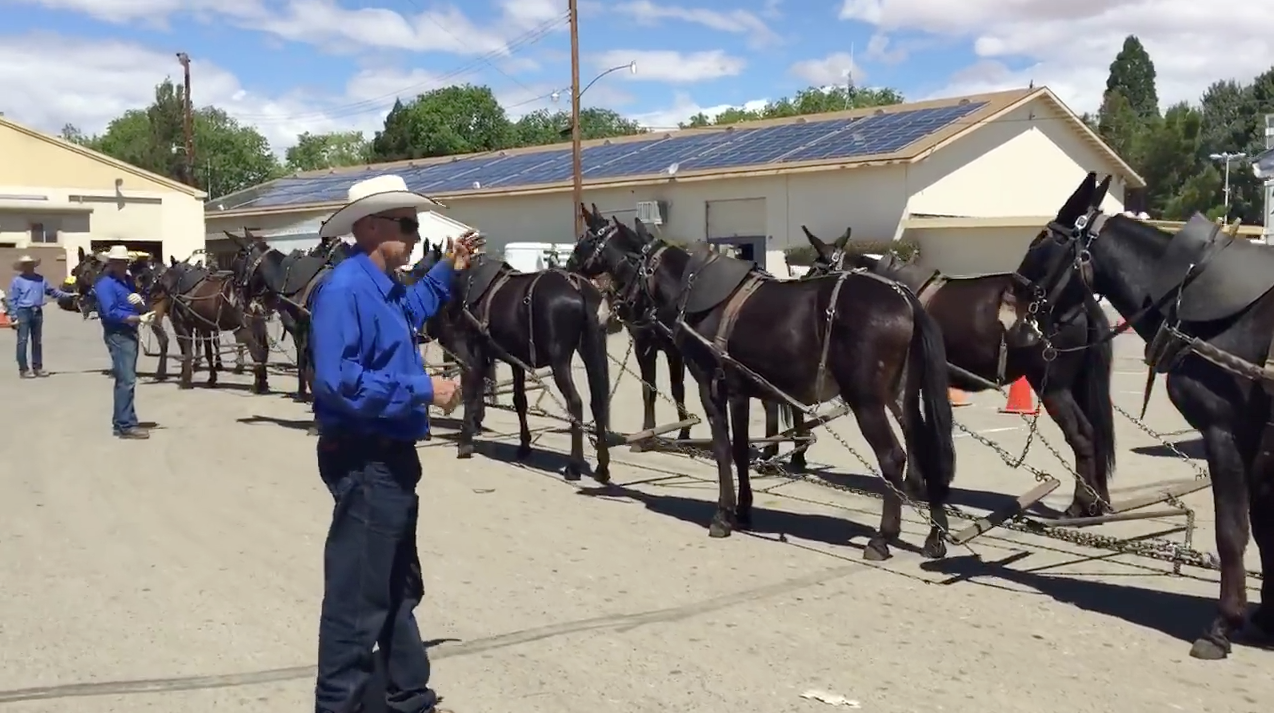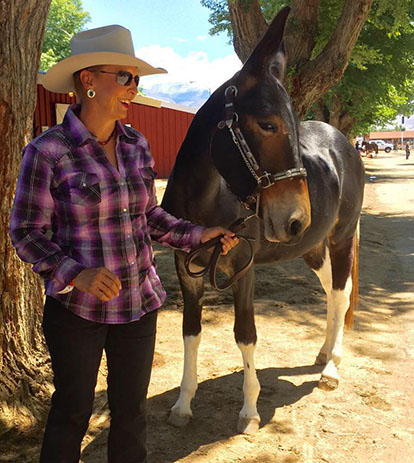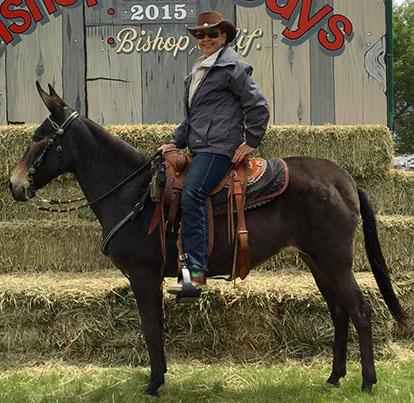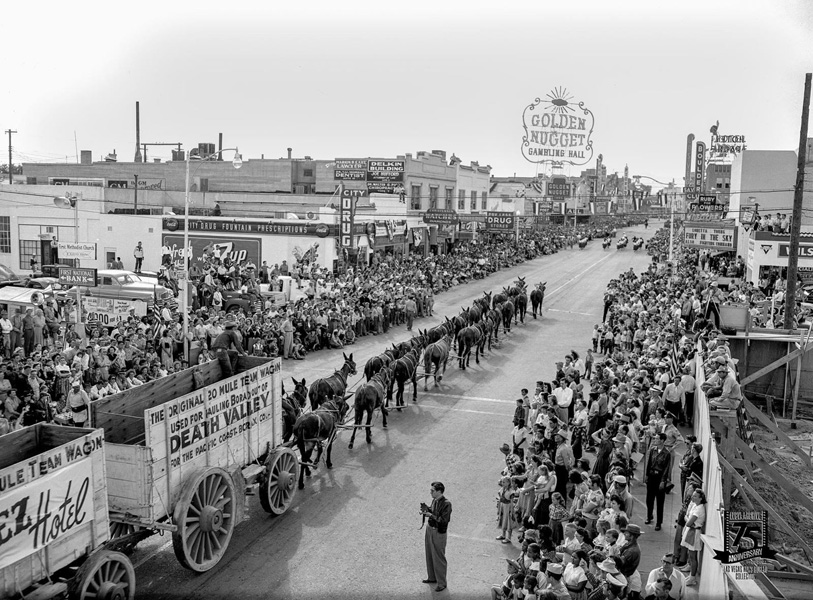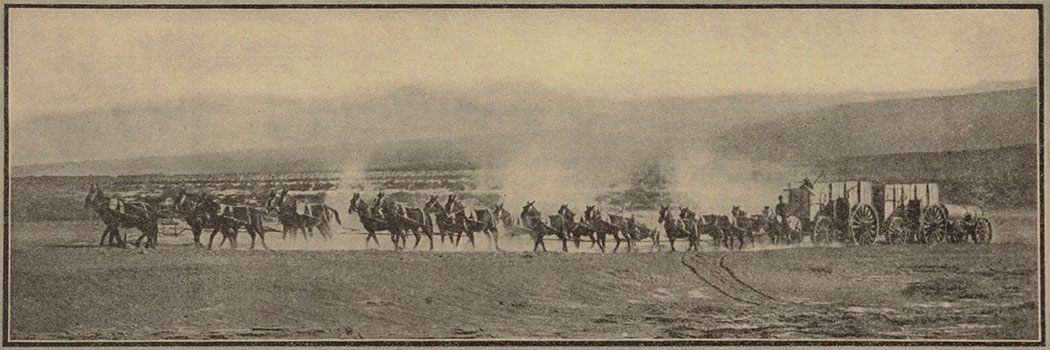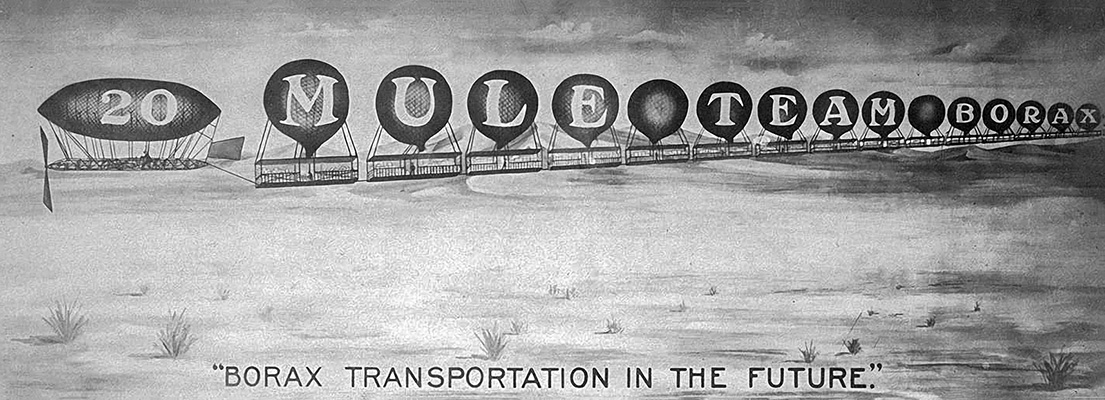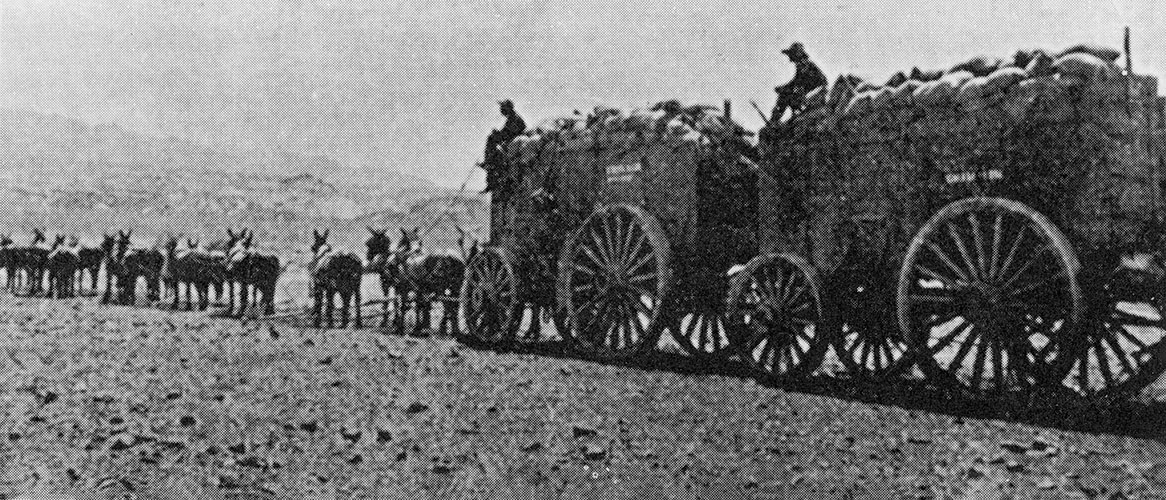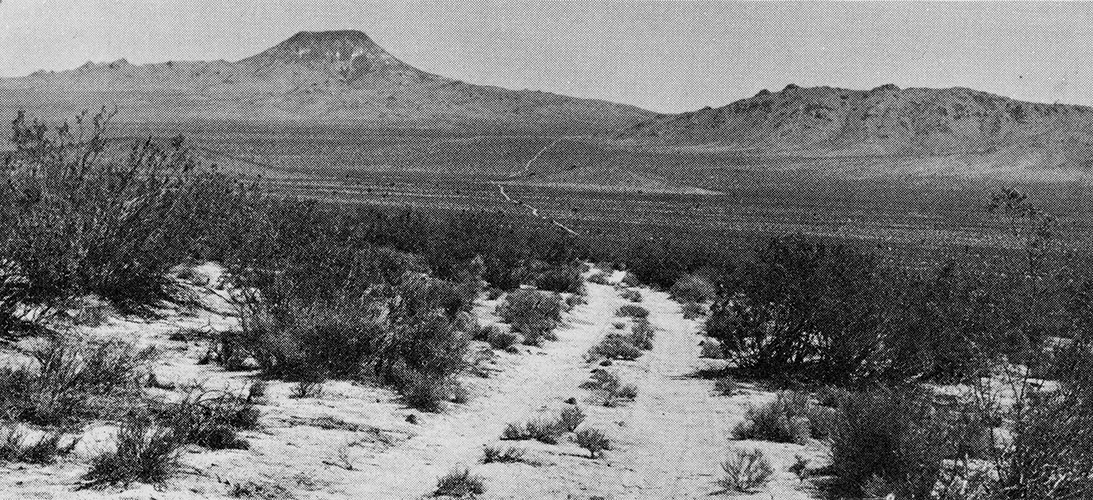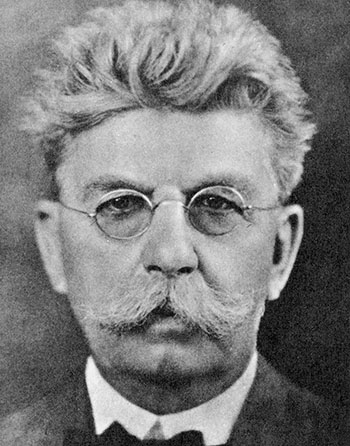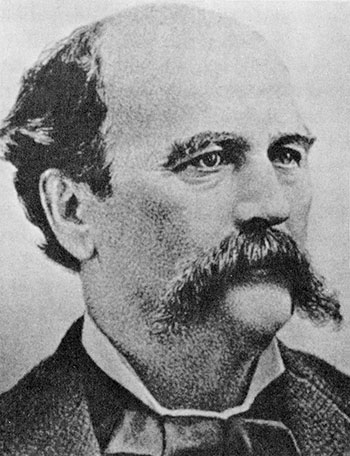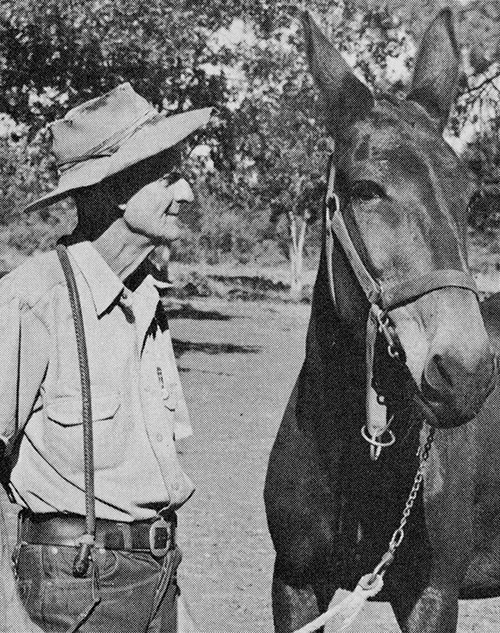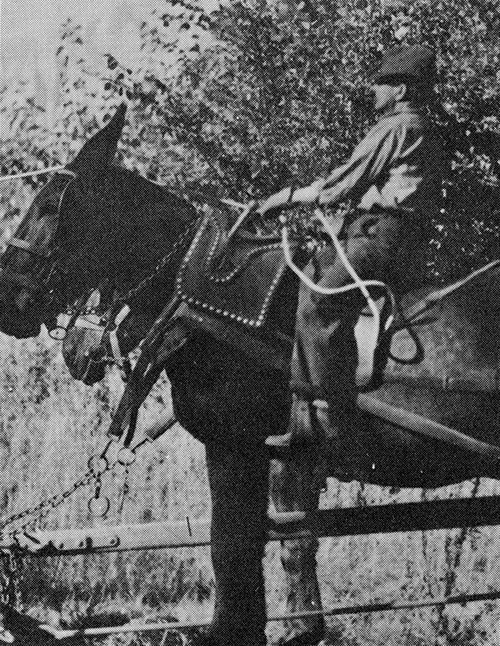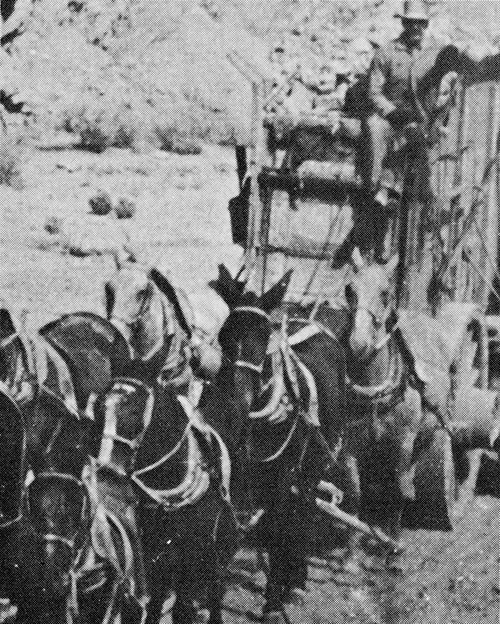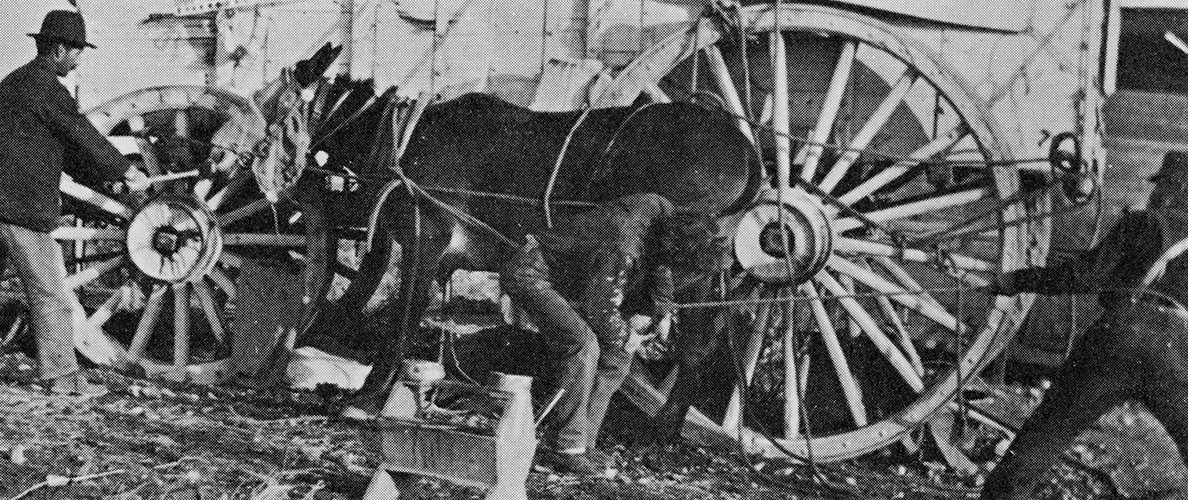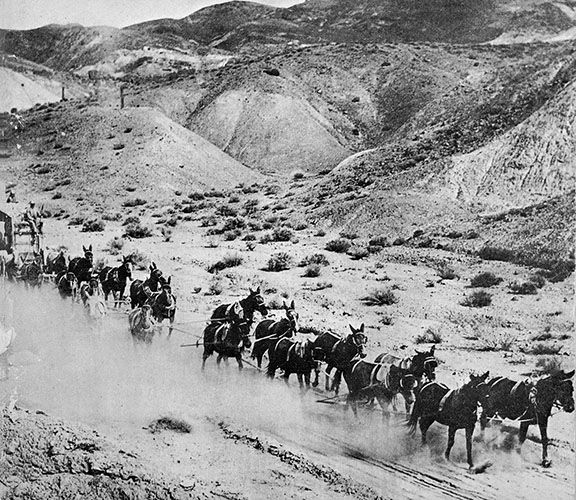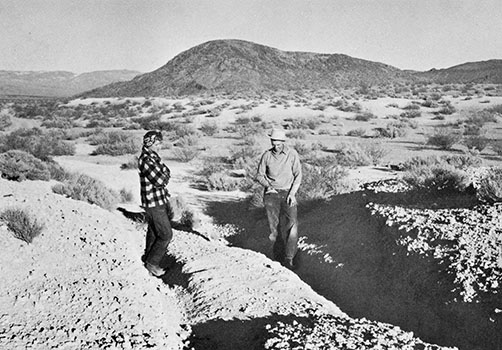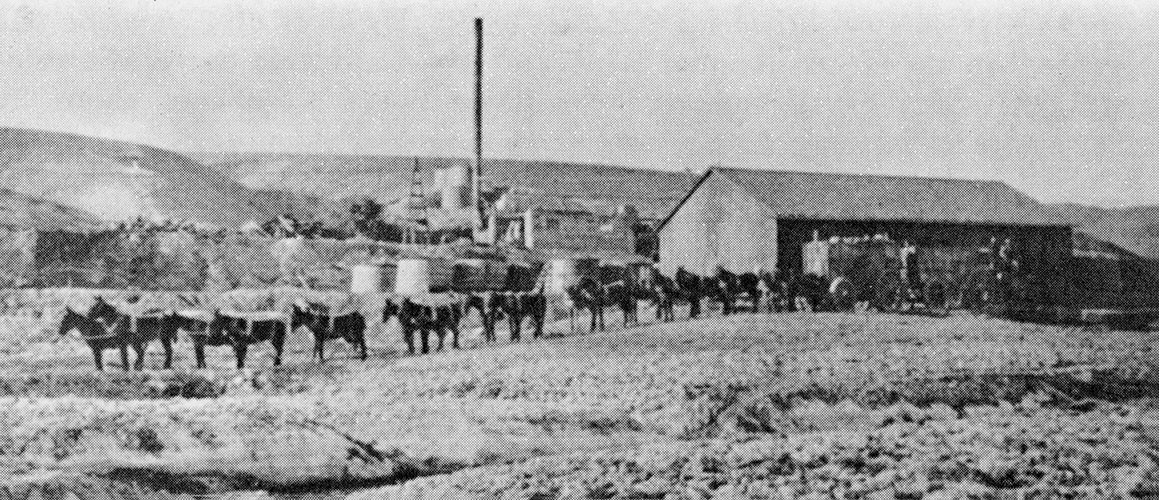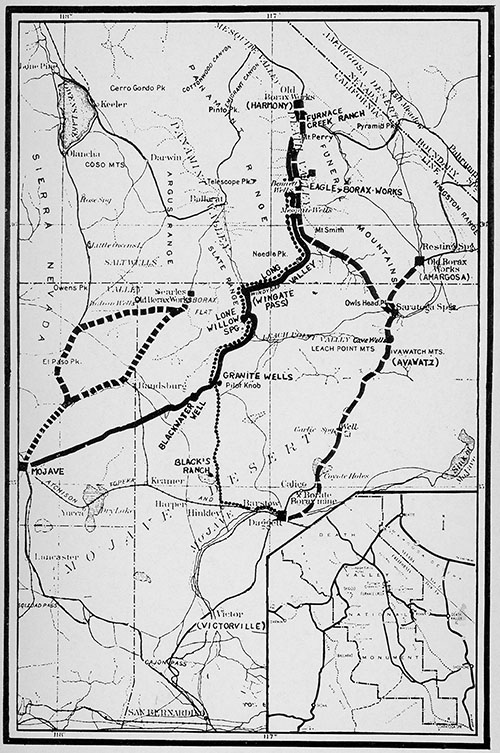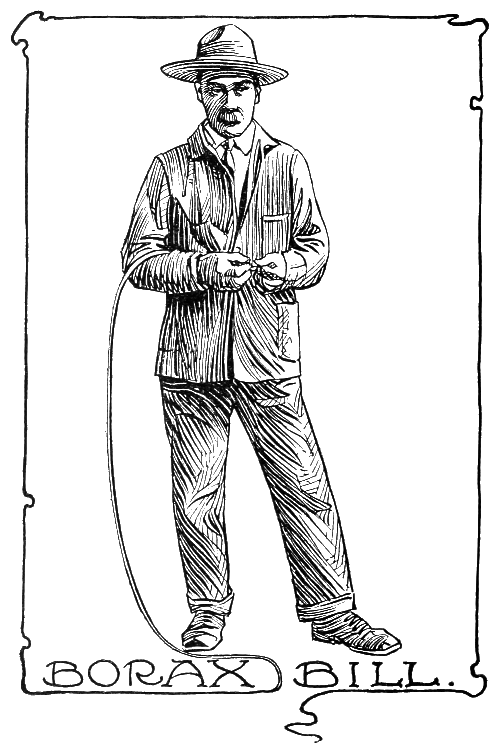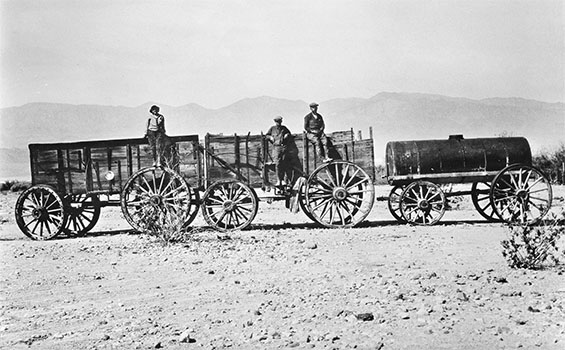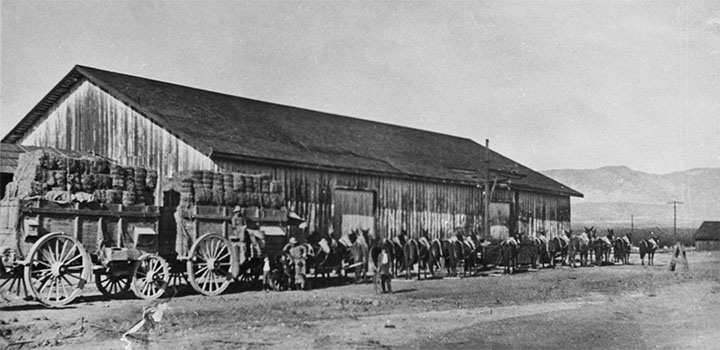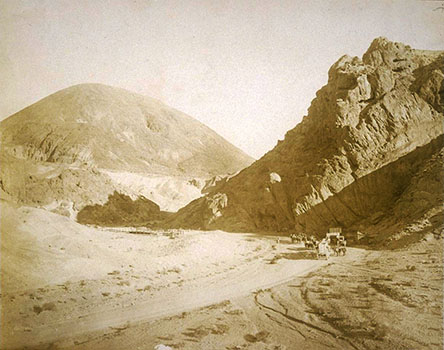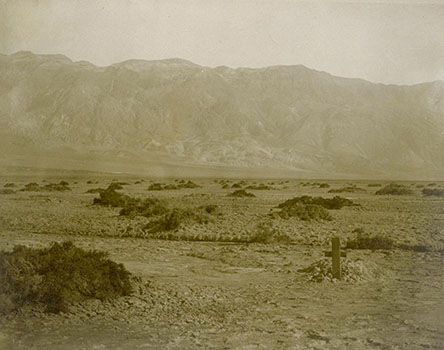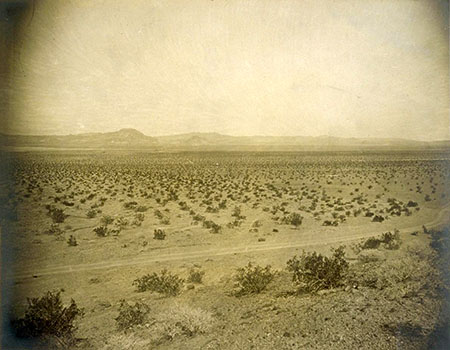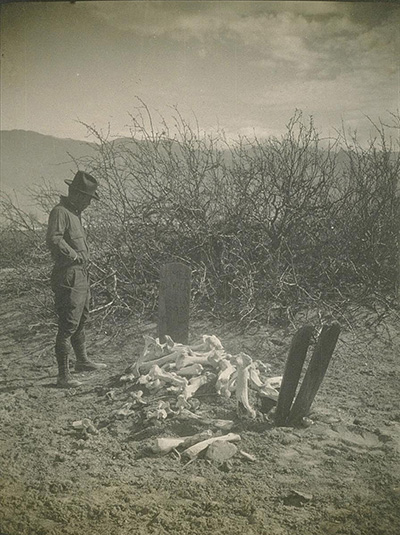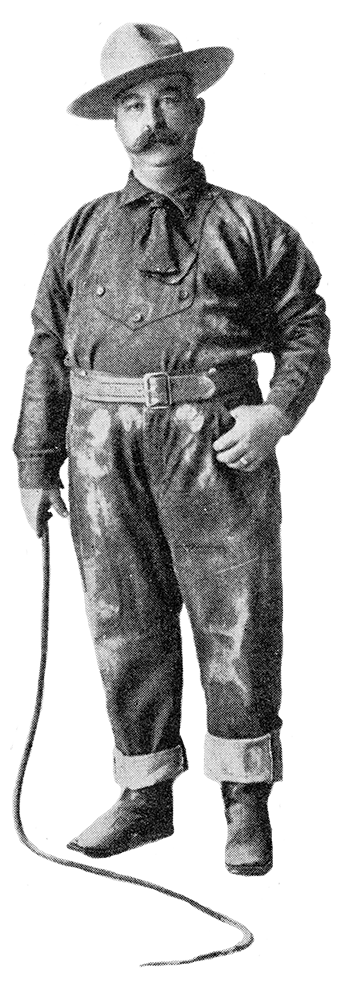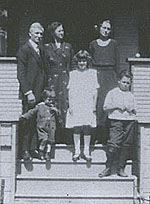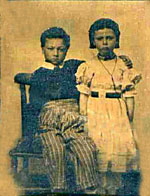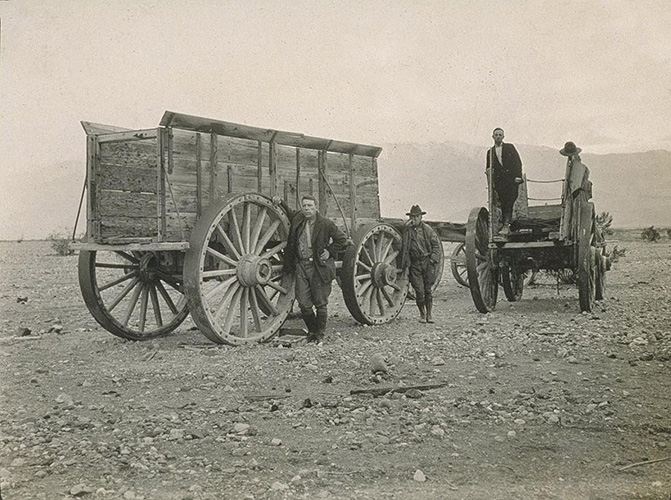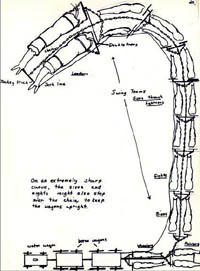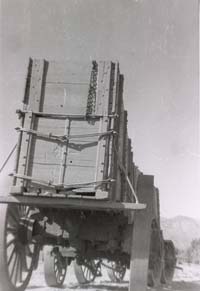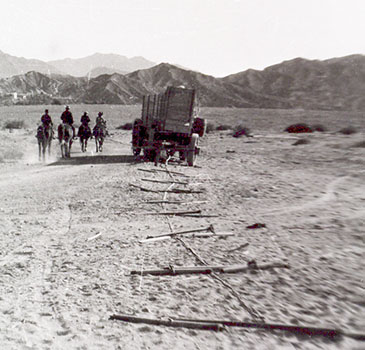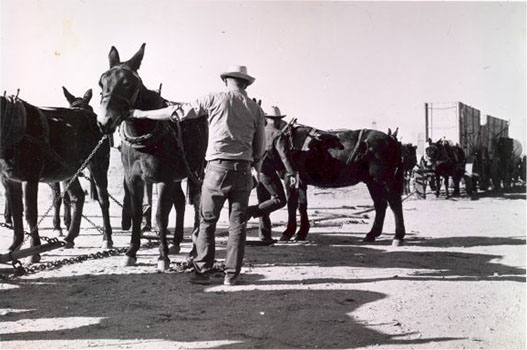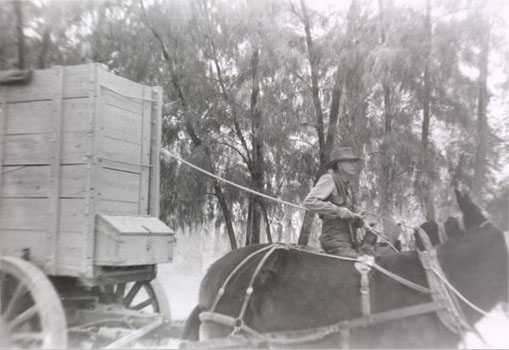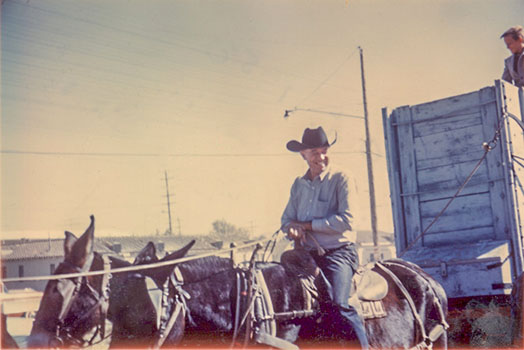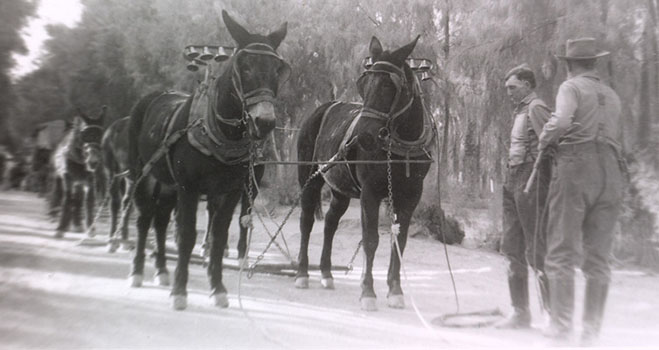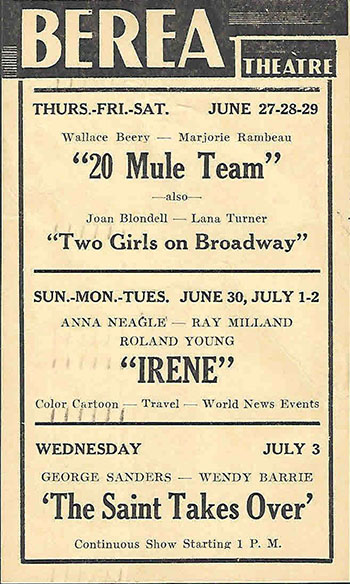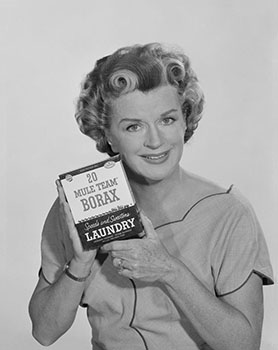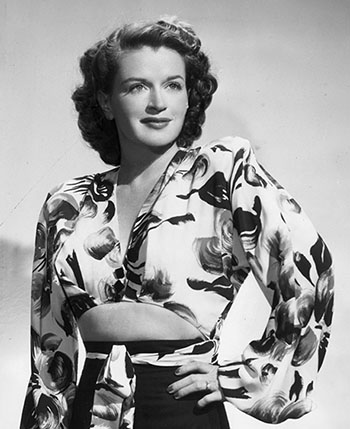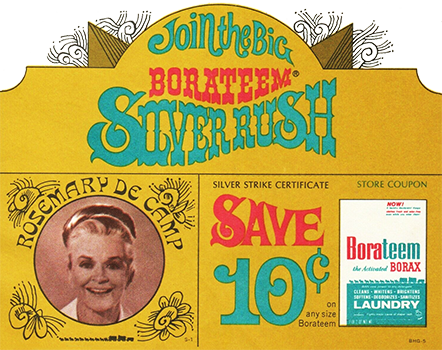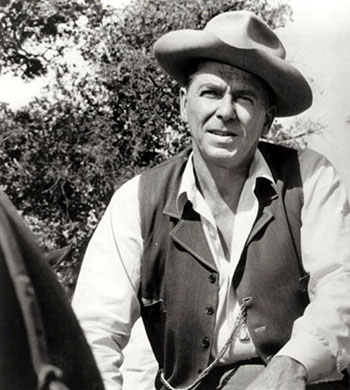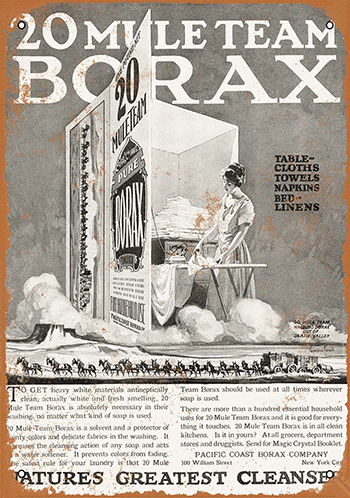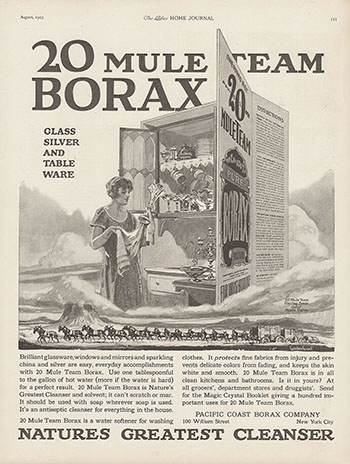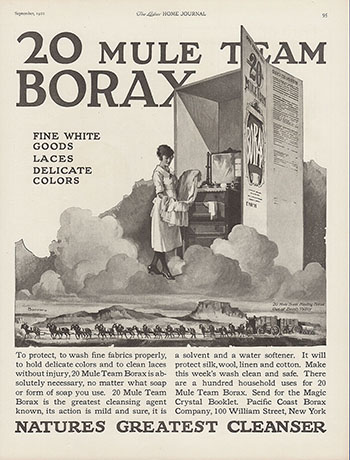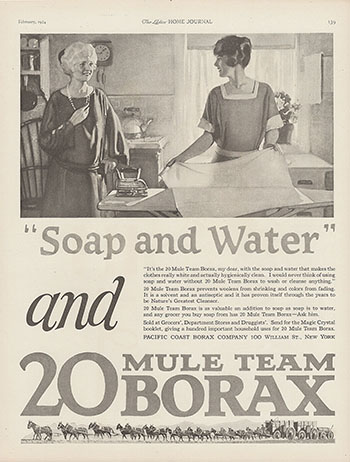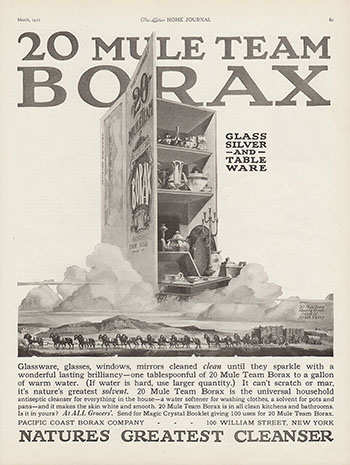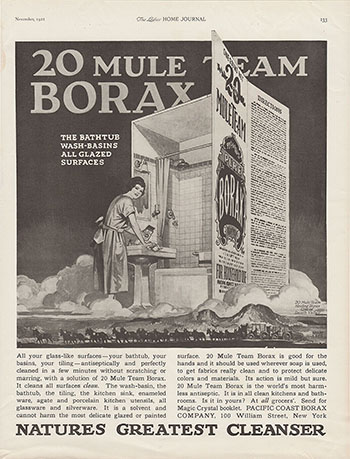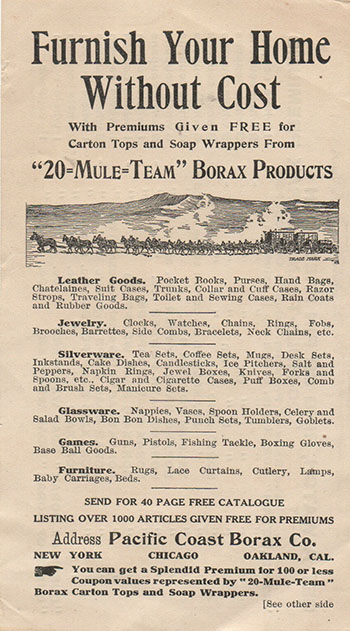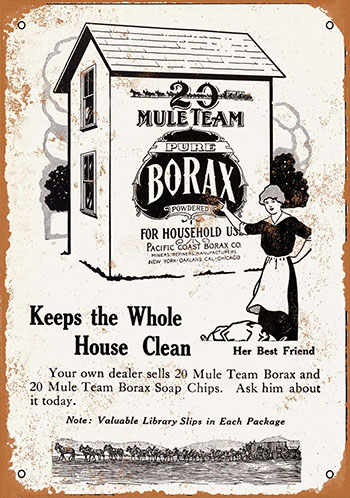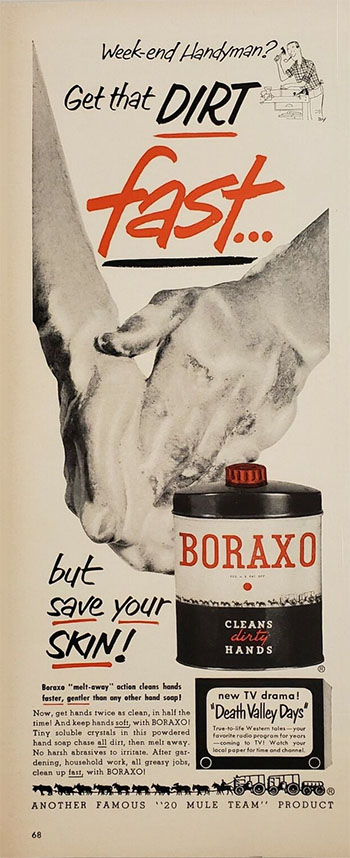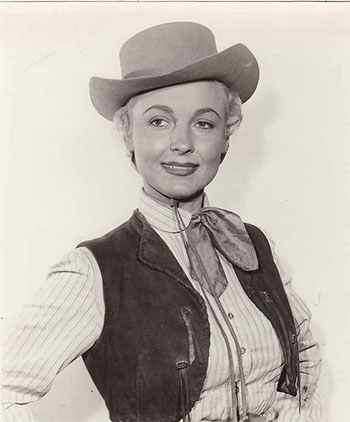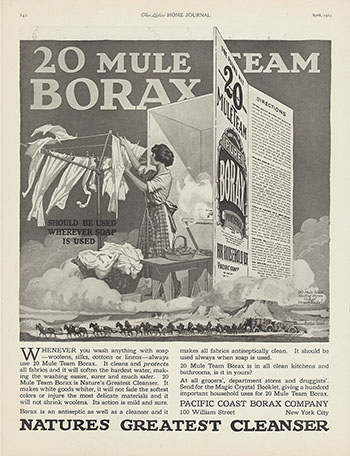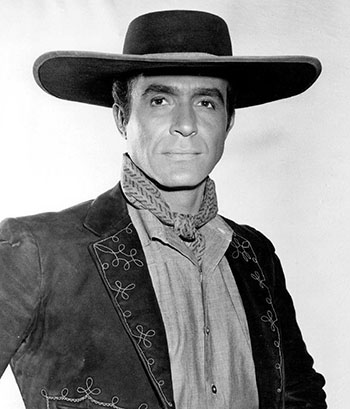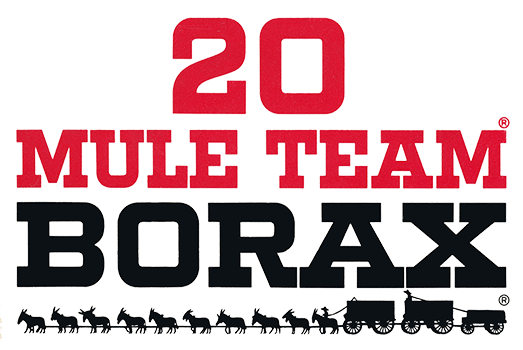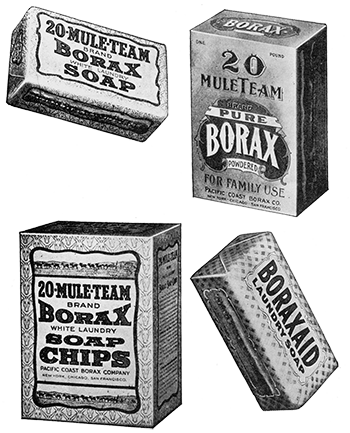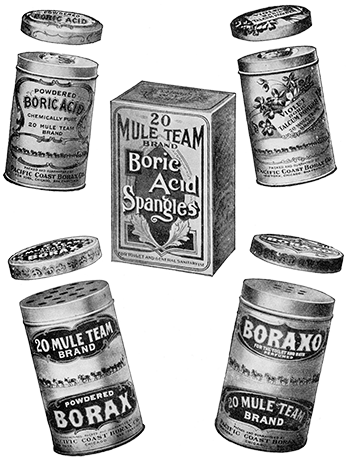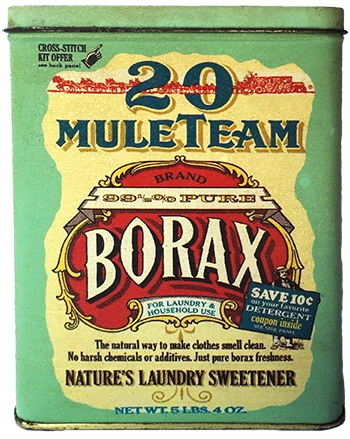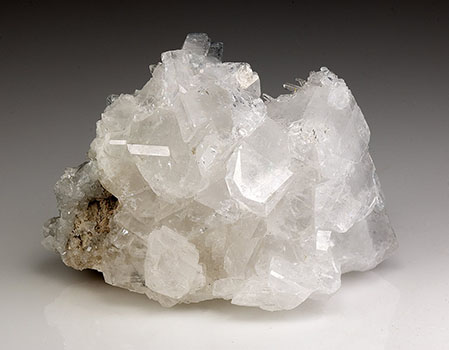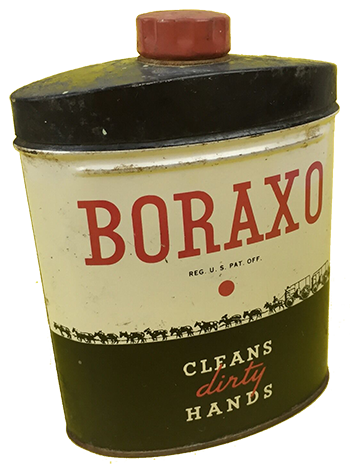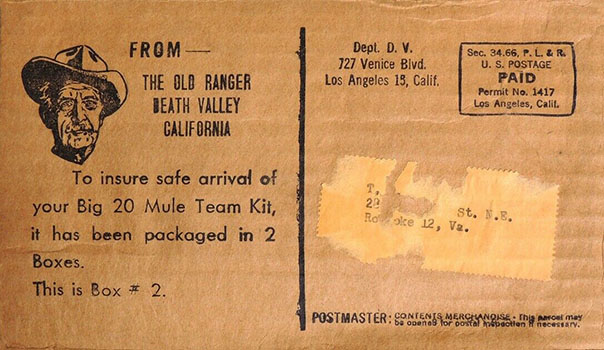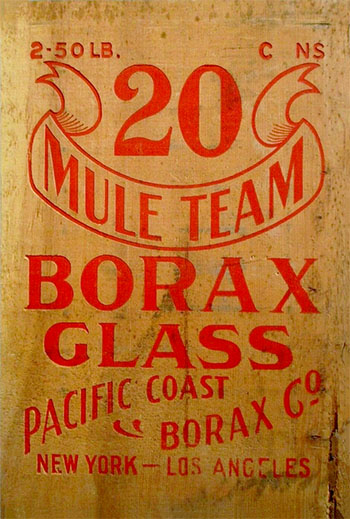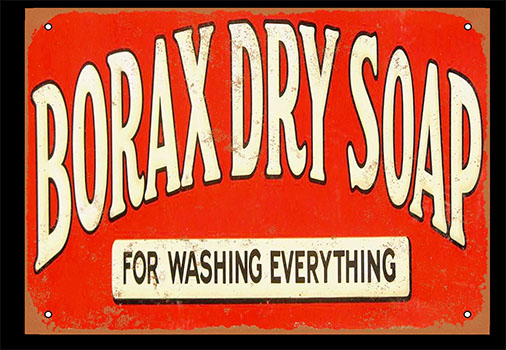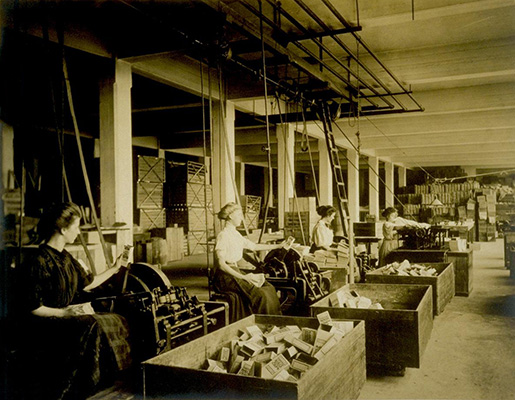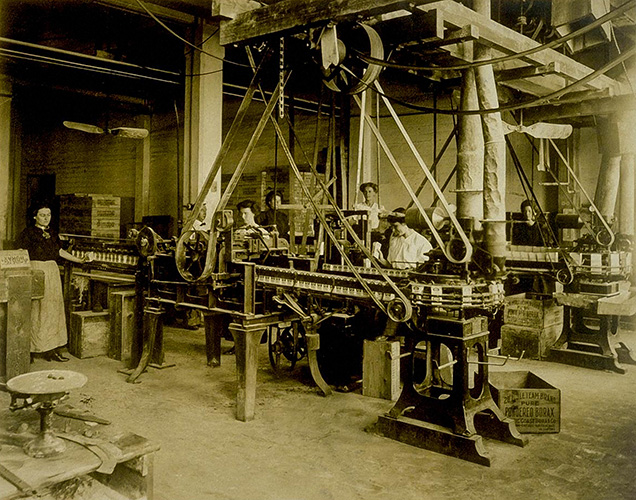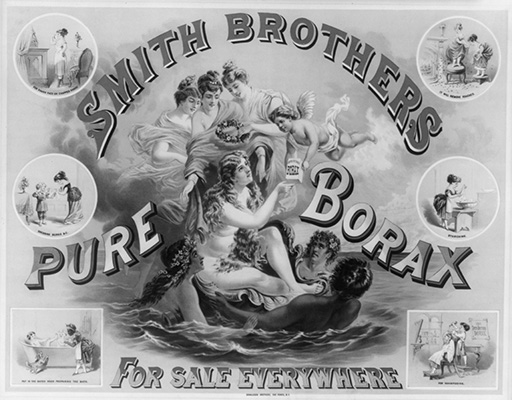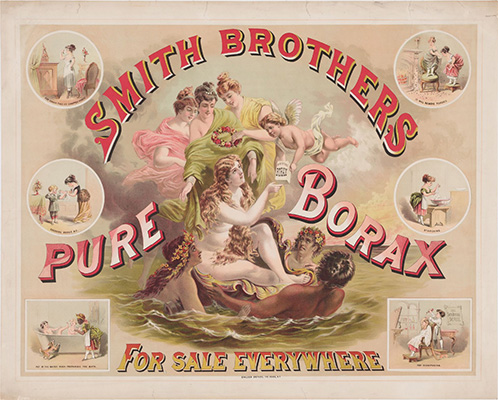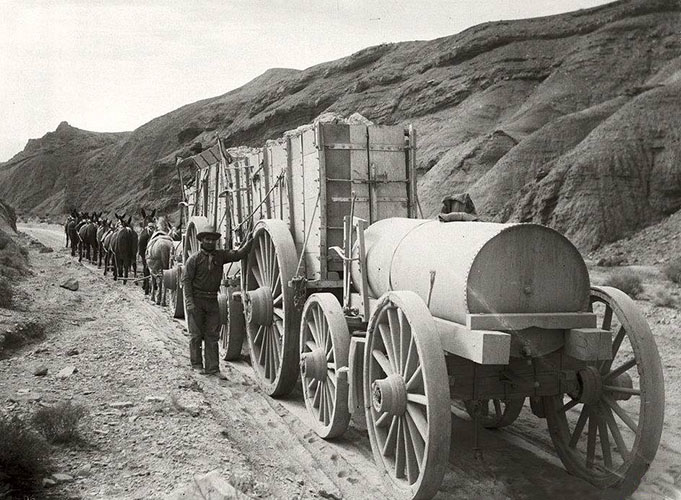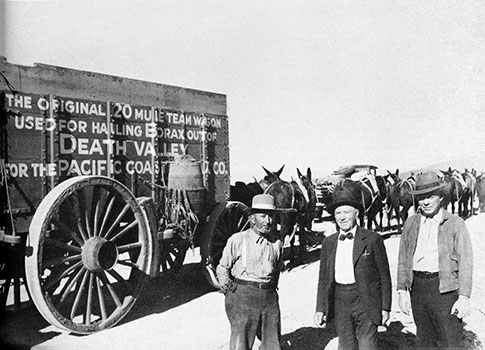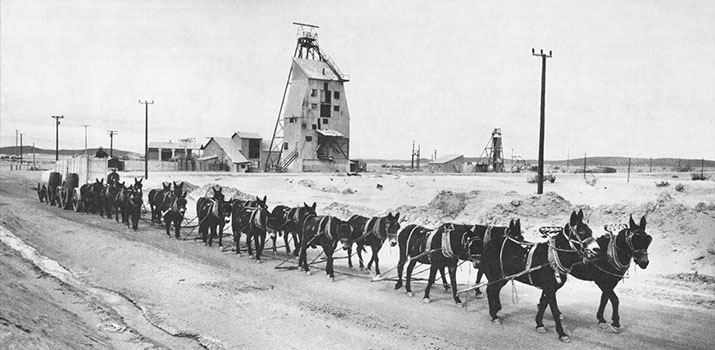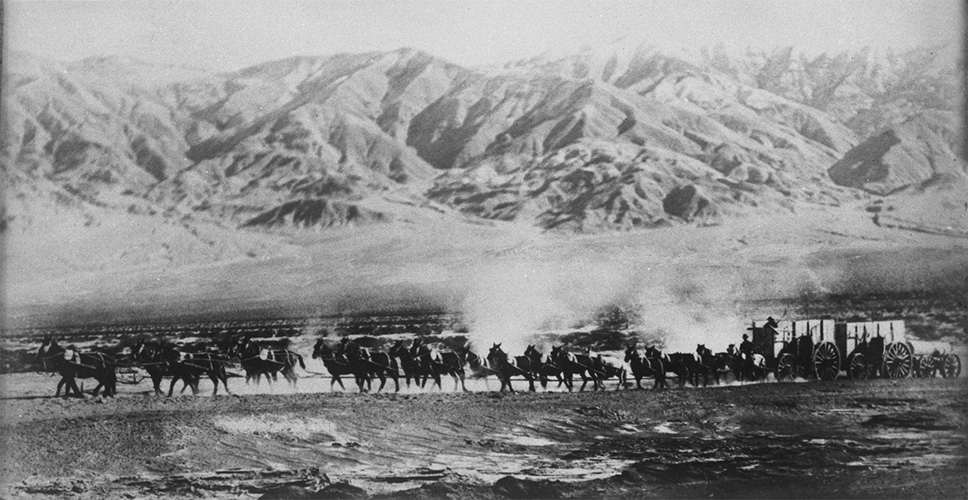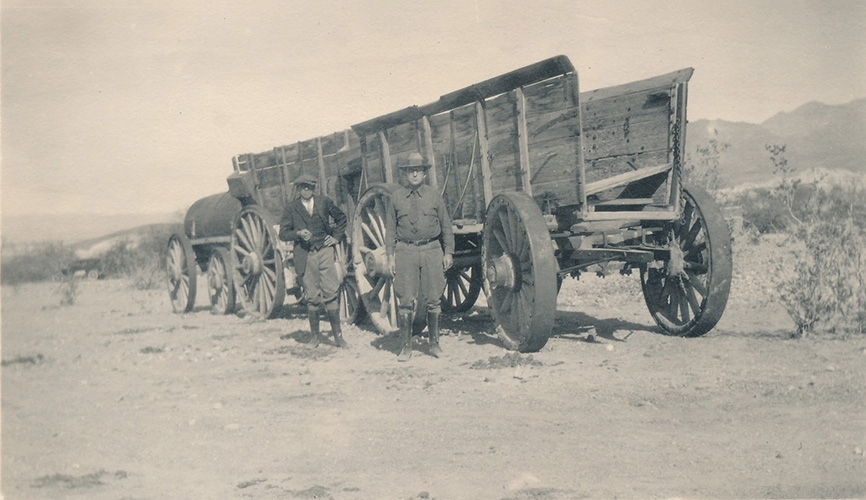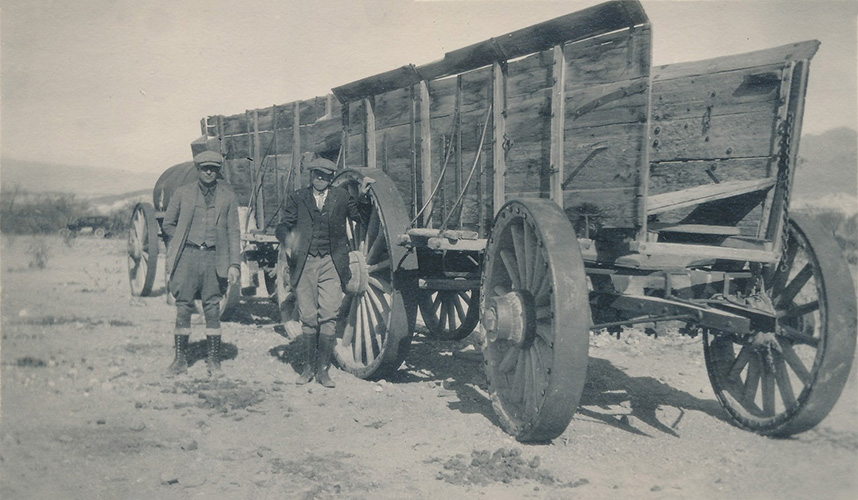 |
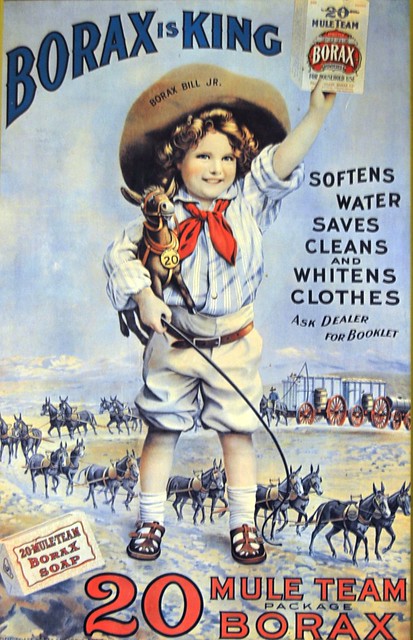 |
See USE NOTICE on Home Page. |
20-Mule Team video - Courtesy of Caroline Gardner |
|
by Harold O. Weight
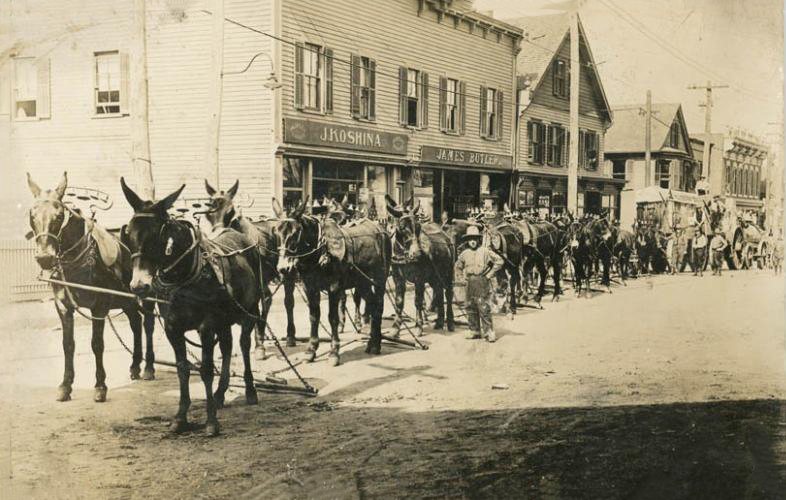 Pacific Coast Borax Company exhibition team on the East Coast in 1919. (photo by Tex Ewell who drove the team) |
The 20-Mule-Team Brigade
by The Pacific Coast Borax Company - 1904
Publication from the Library of Congress
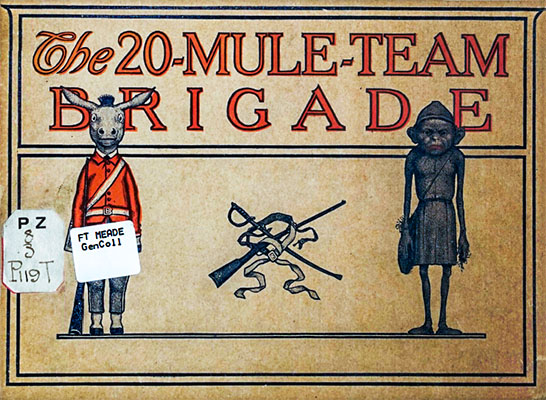
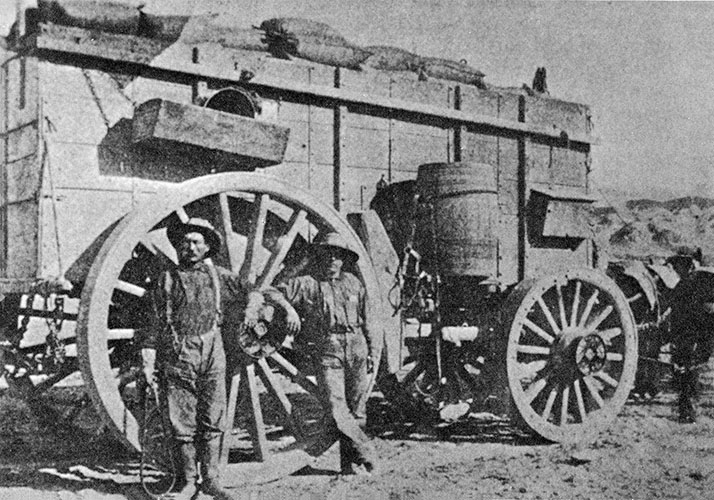 William Shadley (left). A driver who died violently on one trip and is buried at Windy Gap (Photo from 20 Mule Team Days in Death Valley) |
|
| The Pacific Coast Borax Company was founded in 1890 by Francis Marion Smith, who created the company from an amalgamation of several holdings and mine sites in Death Valley, California, and Nevada, and other sites along the Nevada-California border. The company mined for colemanite - a type of borax which was borate of lime. Colemanite contains a higher boron oxide content than other types of borax, a material found in crystal form which is used to work and weld gold. Boron products can also be used in glass manufacturing and as a plant nutrient. In 1880, a New York office of the Pacific Coast Borax Company was opened, run by J. W. Mather and his son, Stephen, who opened a Chicago office as well. The Mathers were deemed responsible for the use of the "20 Mule Team" as the trademark of the Pacific Coast Borax Company. Francis Marion Smith went to England in 1896 and discovered an English food preservative company which used borax and boric acid. Smith soon signed an agreement with the English company creating The Pacific Borax and Redwood's Chemical Works, Ltd., in which the Pacific Coast Borax Company agreed to sell all its assets to the new organization. The company created a factory in the New York area which proved successful as a liaison between London and the California and Nevada sites. In 1899, Borax Consolidated, Limited was created in order to search for other sources of raw material besides those in California, and to expand the foreign refining operations. The new company had absorbed Pacific Borax and Redwood's Chemical Works. The company continued expanding operations in the southwestern United States with the construction railroads, which began replacing the 20 Mule Teams. Improved production methods kept prices down and introduced a great variety of borate materials to the market. In 1915 the company acquired the site of the present refinery, at Wilmington, California. |
|
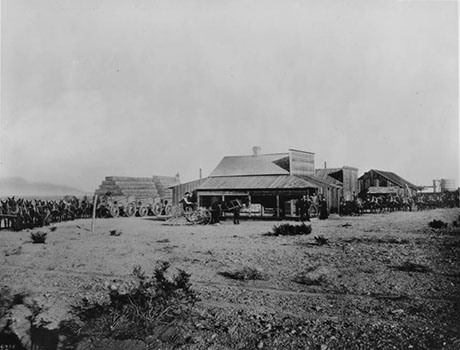 Desert supply station at Daggett before the railroad, showing D.E. Lott's transportation team arriving - 1880. Two men and a woman stand posing on the right side of the station's porch while two other men sit in a horse-drawn wagon at center. Two large double-file ranks of mules stand to either side of the station, hitched to a train of three huge cargo wagons with a rider at left. Mrs Melvina la Pointe Lott, neice of Remi Nadewau was given a 20 mule freight team by Nadeau. The Lotts use the outfit to haul gold ore from the Oro Grande Mines in the Calico Mts. to Daggett. (University of Southern California Library photo) |
|
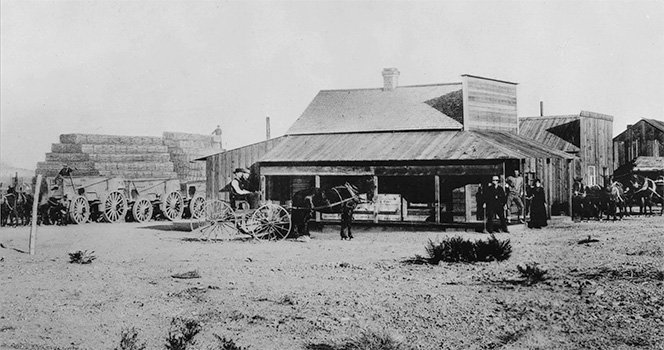 Desert supply station at Daggett before the railroad, showing D.E. Lott's transportation team arriving - 1880. Mrs Melvina la Pointe Lott, neice of Remi Nadewau was given a 20 mule freight team by Nadeau. The Lotts use the outfit to haul gold ore from the Oro Grande Mines in the Calico Mts. to Daggett. (University of Southern California Library photo) |
|
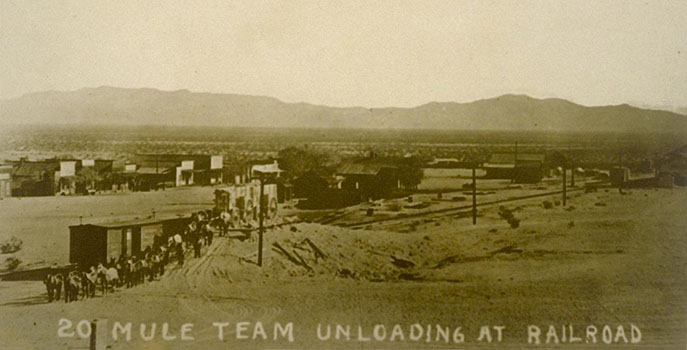 20 Mule Team unloading borax at Daggett after their trek from Death Valley (University of California Berkley Library) ANOTHER PHOTO - Courtesy Rocko Bastida |
|
|
Sydney Smith writes: Just found your site,
and was surprised to find words and pictures of Tex Ewell. Tex
and Glenna Ewell were very dear friends; they are both dead now;
Tex some 25 years ago or so and Glenna just last year, at the
age of 101! I spent many enjoyable hours with Tex and Glenna,
on and off horseback, when I was in high school and college in
the 1960s and early 70s. Tex was a fine human being and an exceptional
horseman. He had a world-class bit collection and horse related
library, both of which are unfortunately probably well dispersed
by now. Tex wasn't just a muleskinner, he spent time in the cavalry
during WWI (veterinary corps) and also in Texas and Mexico during
the Pancho Villa escapades. Tex was one of the foundation Arab
horse breeders in this country; he had lots of Arabian horses
including a stallion named Akil whose bloodlines are much valued
today by the legacy Arab breeders. Tex roamed all over the country
via horseback and packhorse and horse-drawn vehicle, in the days
when it was still possible to do that. He led a very rich life
indeed and I certainly feel fortunate to have been able to spend
some time listening to stories and pouring through the library. |
Of Mines and Mules: A History of Daggett
by Cindy Baker
![]()
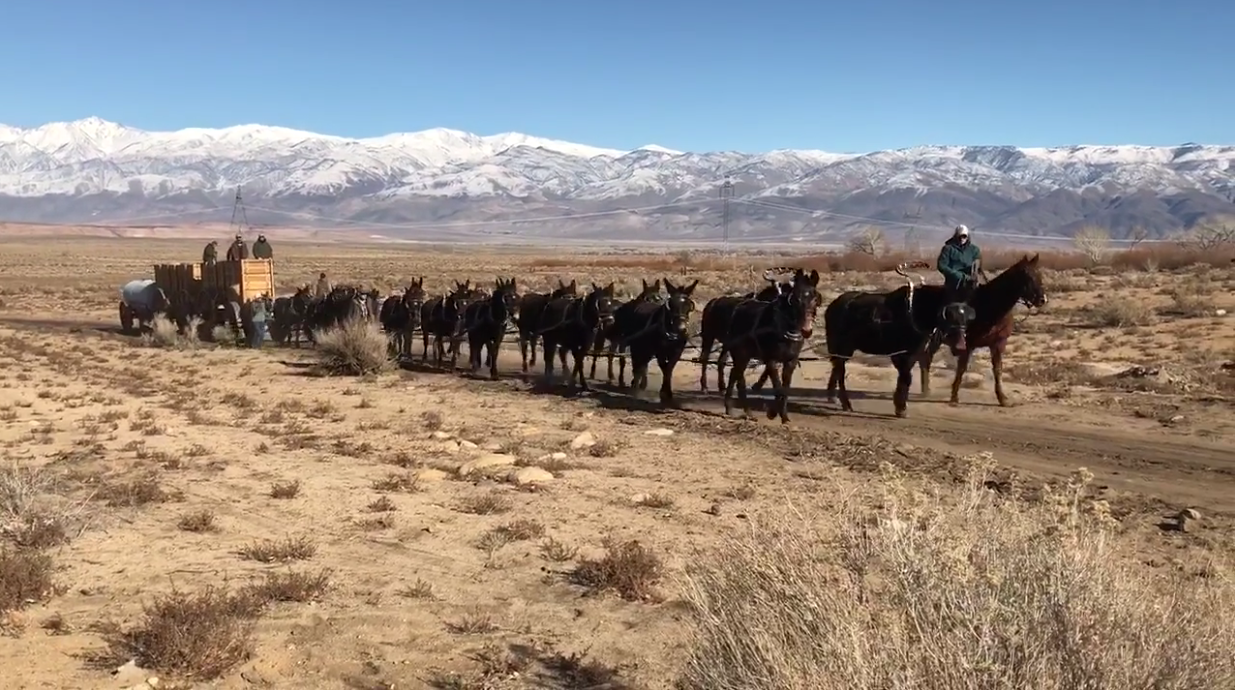 Newly built 20-Mule Team Wagons going for a test run in the California desert before appearing in the 2016 Rose Parade [Click on image for mp4 video] (Courtesy Death Valley Conservency) Twenty Mules — Ten Teams These are the team names counting from the wagon forward to the front team. 01-02 Wheelers - (Largest & strongest. Sometimes draft horses.) 03-04 Pointers - (Leap over the chains, 05-06 Sixes - & turn sideways, & walk 07-08 Eights - sideways on a curve.) 09-10 Swing - (Workers) 11-12 Swing - 13-14 Swing - 15-16 Swing - 17-18 Swing - 19-20 Leaders - (Intelligence & ability to lead.) |
Tales of Twenty Mule Days
by Harold O. Weight
Twenty
Mule Team Drivers (from Harold O. Weight's "20 Mule Team Days in Death Valley") This list of long line skinners were ones that either Tex Ewel or L. Burr Belden knew.
|
|
|
|
Hi, Richard Ford |
| Patty
Deal of Hemet, CA writes: My uncle Em (Emery Fleming Morris 1859 - ?) was one of the 20 mule team drivers. His parents were James Campbell Morris (1827-1909) and Mary Catherine Moore (1832 - ?). My great great grandparent's daughter, Alice Morris (1854 - 1934) married William Lanzo Becktel (1854 - 1944). They had eight children (4 sons & 4 daughters). One of the sons, James (Uncle Jim) Becktel had the ranch. They all loved coming to Uncle Jim's ranch in Palmdale, along with many celebrities, relatives, and guests. Uncle Jim had three homes on property neat as a pin. Jim's house was a large two story with a 2nd story filled with beds. Downstairs were 3 bedrooms and a living room and kitchen where Uncle Jim cooked for all. They had a lovely bathroom with gold fixtures but you still had to use the outhouse for the toilet! The house was filled with antiques and it was a treat to visit. Uncle "Em" had his own squeaky clean house about 200 or so feet from the main house. Uncle Jim was written about a lot by the local newspapers because he kept the county road graded. He also contributed to the Knotts [Berry Farm] family throughout the years. "It Happened Around Here" by Dennis H. Stovall |
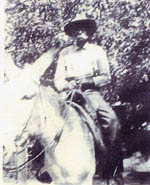 Emery Fleming Morris |
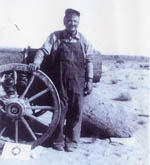 Uncle Jim |
The Famous Twenty Mule Borax Team from Death Valley California
by Pacific Coast Borax Company U. S. A.
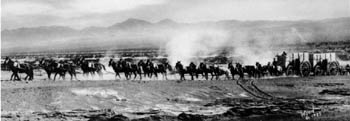 The twenty-mule teams actually consisted of eighteen mules and two horses. The 500-pound-heavier horses, called "wheelers," could handle the wagon's heavy tongue better. Five sets of wagons freighted the borax 165 miles to the railhead at Mojave. A pair of wagons (excluding the water wagon) carried a payload up to 36.5 tons. The larger steel tires, 1" x 8", ware about 7' tall and 22' in circumference, each weighing 600 to 1000 pounds. (Steve Willard photograph) |
|
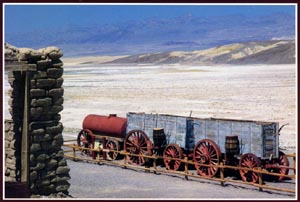 Operating from 1882 to 1889, the Harmony Borax Works was the origin point for hauling refined borax 165 miles to the railroad at Mojave on a three-week round trip. (Ed Cooper photograph) |
|
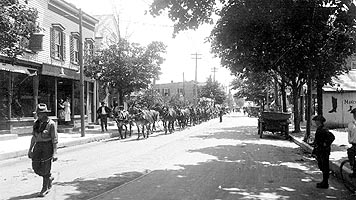 Twenty-mule team in Mineola, New York. Photograph supplied by John Hyslop (Assistant Division Manager of the Long Island Division of the Queens Borough Public Library, April 2005). |
|
Photos and maps courtesy of Stephanie Morgan |
|
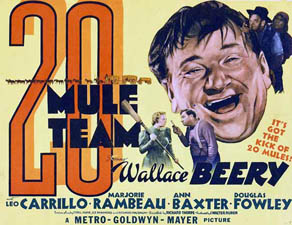 20 Mule Team (1940) Wallace Berry |
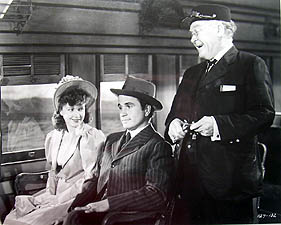 20 Mule Team Movie L to R: Anne Baxter (Joan Johnson), Noah Beery. Jr. (Mitch), Oscar O'Shea (Train Conductor) |
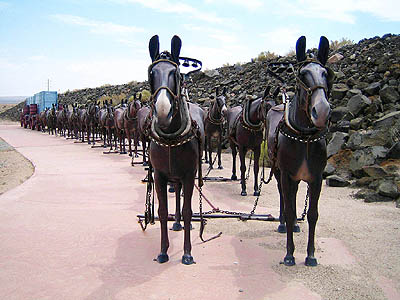 Full Scale 20 Mule Team Model at the Pacific Coast Borax Company in Boron, California. |
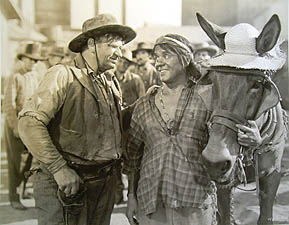 20 Mule Team Movie L to R: Wallace Beery (Skinner Bill Bragg), Leo Carrillo (Piute Pete) |
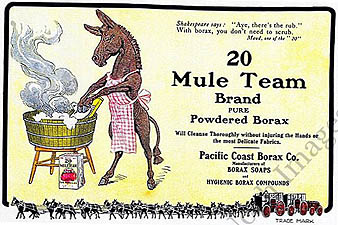 Pacific Coast Borax Advertisement |
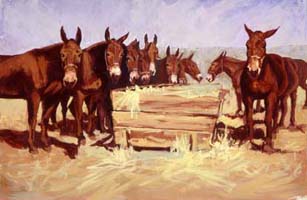 20 Mule Team by Adrienne Quinn [copyright Adrienne Quinn, Feminine Mystique Art Gallery] |
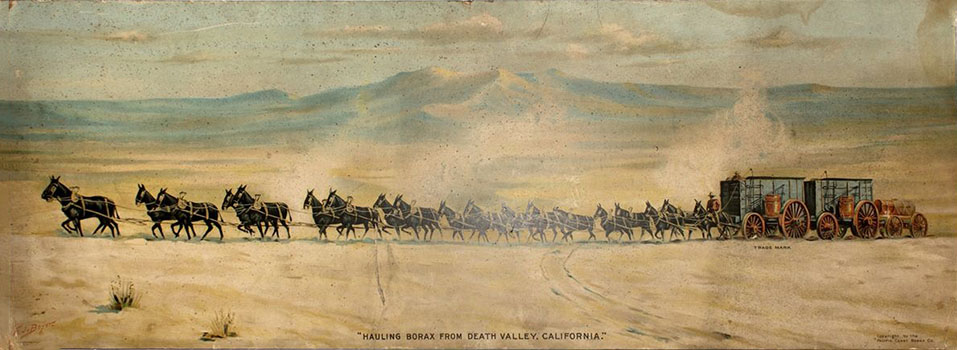 20 Mule Team Hauling Borax from Death Valley, California |
|
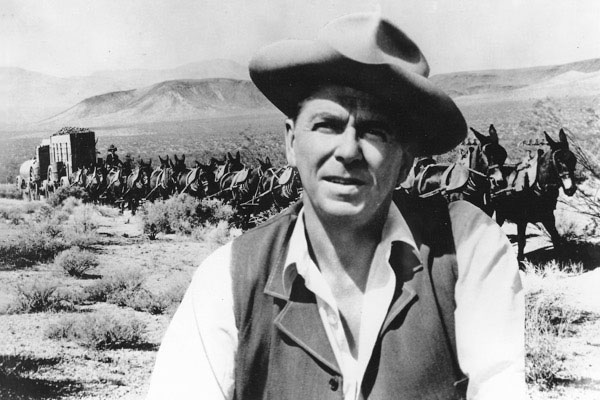
Ronald Regan, episode start and host of "Death Valley Days"
|
|
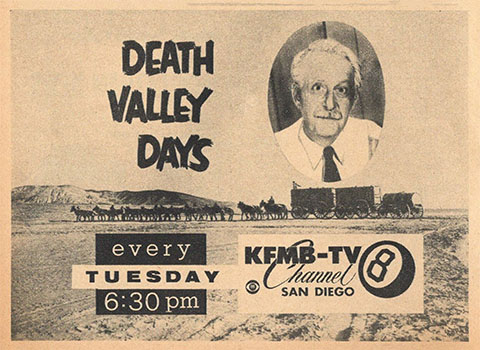 Death Valley Days TV Advertisement (Ebay posting) |
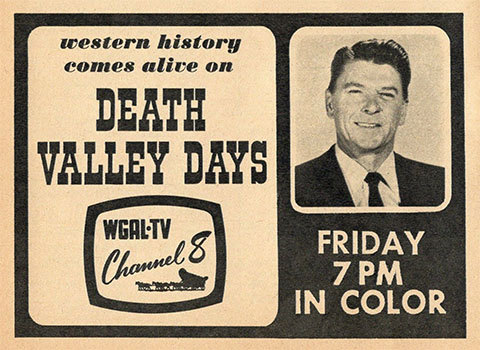 Death Valley Days TV Advertisement (Ebay posting) |
20
Mule Team in Advertising (Offerings gleaned off of ebay) |
||
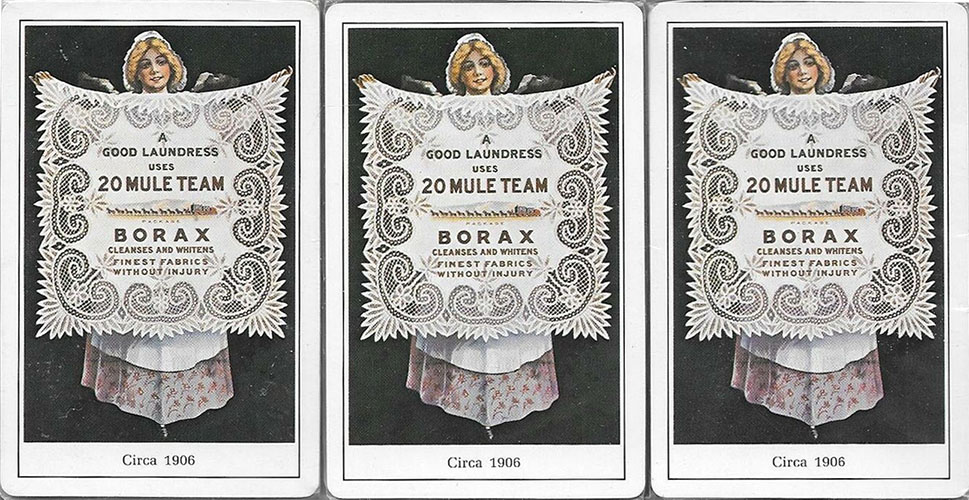 20 Mule Team - A Good Laundress Advertisement - 1906 |
||
|
This
is just to let you know that the 20 Mule Team Model Kits are
available. 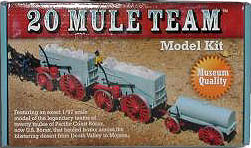 The kits are available on-line at: Ebay It is great to see that these models are still available. The Pigmy Packer September 2019 |
 20 Mule Team model and backdrop painted and assembled by Ray DeLea. |
|
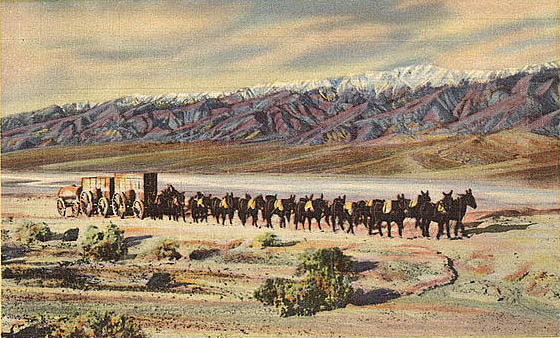 Library of Congress postcard which Woody Guthrie sent to Alan Lomax on January 15, 1941. Reverse side of the postcard. |
|
Colemanite
Colemanite (Ca2B6O11·5H2O)or (CaB3O4(OH)3·H2O)is a borate mineral found in evaporite deposits of alkaline lacustrine environments. Colemanite is a secondary mineral that forms by alteration of borax and ulexite. It was first described in 1884 for an occurrence near Furnace Creek in Death Valley and was named after William Tell Coleman (1824–1893), owner of the mine "Harmony Borax Works" where it was first found. At the time, Coleman had alternatively proposed the name "smithite" instead after his business associate Francis Marion Smith. |
|
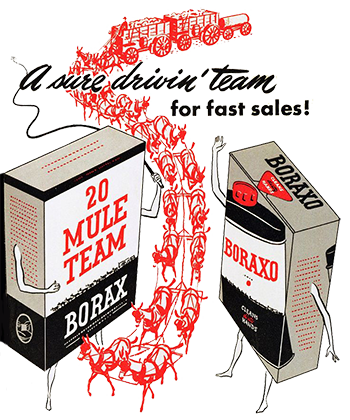 |
|
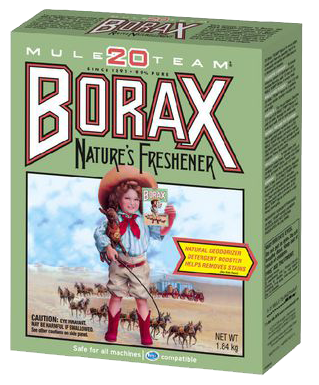 |
|
20 Mule Team Route
|
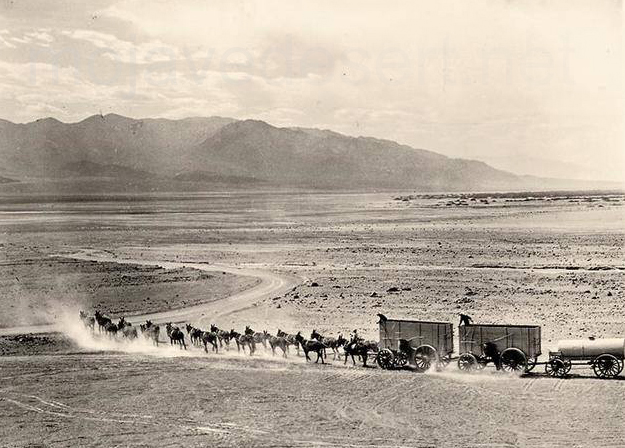 20 Mule Team out on the Mojave desert |
|
Photo courtesy of UCLA Digital Library Collections |
Photos courtesy of John Norman Friend In February 1928 my Grandfather Fred Friend traveled to Death Valley with friends Bostwick and Strayer. At Furnace Creek they found the 20 Mule Team Borax Wagons. Here's what they looked like at that time. Fred is in the darker jacket. |
| Mike Walker comments: My great great grandpa used to drive the 20 mule teams. He has a model of the team on his fireplace mantel along with an old cowboy hat. He died when I was a kid but we all remember the stories and the team. 2022 |
| Mt. Whitney Pack Trains - Chyrsler and Cook Days | ||
|
|
Vintage Panorama Photos of the Sierra Nevada | |
|
|
Ghosts of the Past - Owens Valley Aqueduct & Cottonwood Sawmill | |
|
More 20-Mule-Team History |
|
|
|
Manzanar Japanese Internment Camp History |
|
|
|
Manzanar High School Portraits & History |
|
|
|
Recent Manzanar Pictures/History & Manzanar Free Press |
|
Sign Guestbook View Old Guest Book Entries Oct 1999 - Feb 2015 (MS Word) |
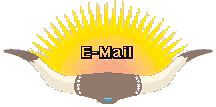 CONTACT the Pigmy Packer |
View Guestbook View Old Guest Book Entries Oct 1999 - Feb 2015 (PDF) |
